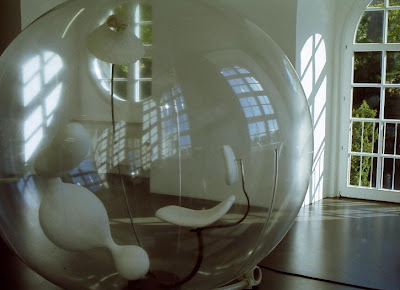.JPG)
“global financial crisis” is the headline for almost all the newspapers around the world this week, as one of the big american money towers has collapsed and another been pillared. in this global-scale financial turmoil, who can read the future now? meanwhile, there is one more headline that has caught my eye this week. it’s been seen in european and american newspapers, which presents such a contrast to the darkest news of the world finacial markets.
*
.jpg)
.jpg)
the news is also on money, though, it’s bright one. it is about damien. that damien "shark + tank + hirst". sotheby's has made a record sale for his artworks in london despite the crisis. it is a lucky thing for the yba giant that he’s still got big fans. rich big fans. but how and where do they have the money while everyone else is losing it?
*
at goldsimiths college, damien hirst was taught by the professor, michael craig-martin who forced the world to call his artwork, which consists of a plain glass of water on a shelf, “an oak tree” in the same way as marcel duchamp did 9 decades ago. it might sound familiar to you if you reminded of the children’s story “the emperor’s new clothes”. i’m sure you’d feel ridiculed. artists are always dead serious (rather, seriously mischievous), however. damien hirst always loves to render that kind of extraordinary dark playfulness.
*
like his artwork, his auction was never ordinary this time. that’s why this auction attracted the media this much. he is bona fide iconoclast and polemicist, you know. apparently, he dislikes the conventional system of “art dealing” via commercial galleries. when he was an art student, he organised a group show for his fellow ybas and himself at a derelict warehouse, so it must’ve been a piece of cake for him to organise the solo auction at sotheby’s with no help from his dealers.
*
*
a few years later the yba caught the international notice, i studied fine art curating at goldsmiths. i learned the system how artists could find patrons such as collectors and museums, or governments. any artist needs money to produce an artwork. but the problem was, i found myself never having interest nor talent in selling art. i could not sell an artwork like a car. this is my old problem, really. i appeared to have no interest whatsoever in selling any commodities.
i just wonder if there were no funky galleries such as white cube and gagosian to show their work, where would collectors find it outside the museums? that would be very disappointing for gallery-goers, too.
*
one art critic envisages damien’s attempt at sotheby’s would be one-off. i don’t know. surviving the relationship between artists, dealers and collectors can be applied to the financial market. we all look for something to materially satisfy us. after all, buying art is about possession (better to call it ownership?) with a touch of dream, fantasy, or whatever. wanting either art or money offers us a game.
yes, contemporary art is a game, as it were. so why not play? but i always preferred games with no direct money talk involved. i enjoyed the student shows at the end of the academic year that leading art dealers, curators and some renowned artists came along. i saw my postmodernism teacher, sarat maharaj, guiding the british pop art master, richard hamilton and even had a chance to exchange a few words with him. in september soon after i completed my ma curatorship course, i visited documenta x, the 10th international contemporary art event, which was inaugurated in 1955 and takes place on a vast scale in kassel for 100 days every 5 years.
*
.jpg)
.jpg)
my train journey from frankfurt was a heaven on earth in comparison with the british railway service. every exhibition put on view was exhilarating. i liked documenta because it was less commercial, less glamorous than la biennale di venezia (i've never been to, though). i visited kassel again for the 11th five years later when i was basing back in london. by the way, you might have a neurotic image for contemporary art. but this art lovers’ playground cannot be suitable for fragile arty people. in fact quite the opposite, spectators must be fit enough to walk a long distance between venues.
.jpg)
*
my life goes on without contemporary art in osaka. i hardly visit an art museum, let alone commercial galleries these days. it’s because, both mentally and physically, i am situated a bit too far from the bright lights now, living in a suburb where my kind of art game doesn’t exits at all. yet, i love browsing news about good ol’ ybas on the net. if there was no such art, this world would be too sterile, wouldn't it?
*
.jpg)

No comments:
Post a Comment